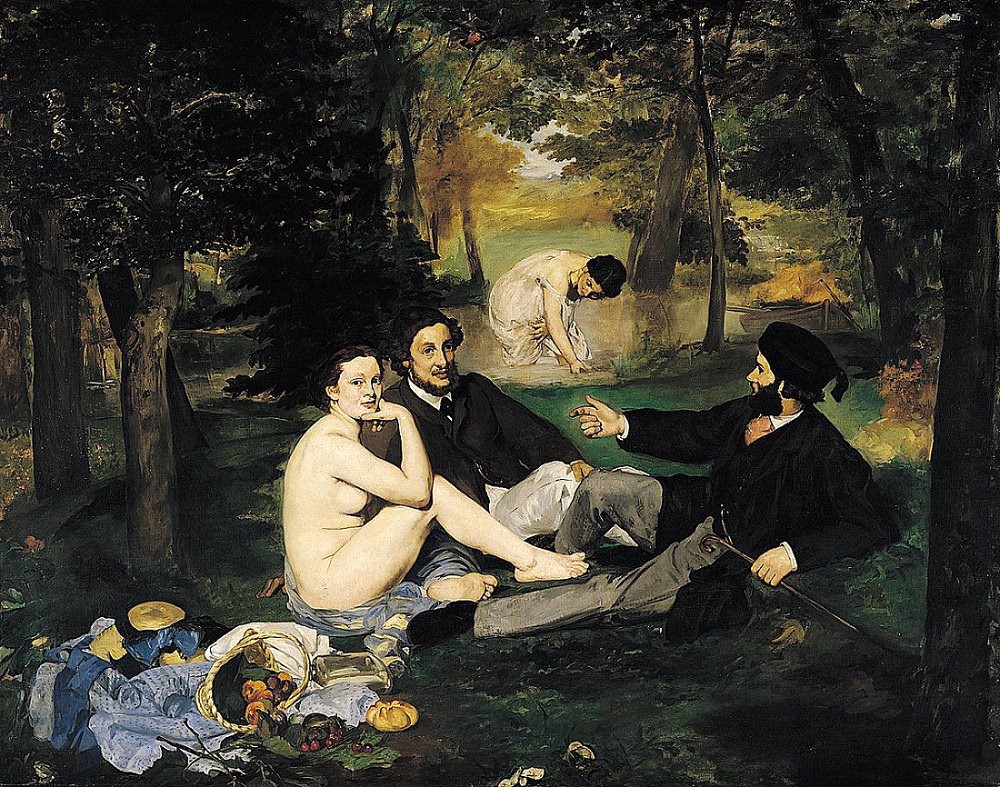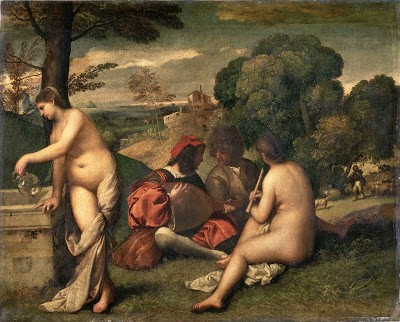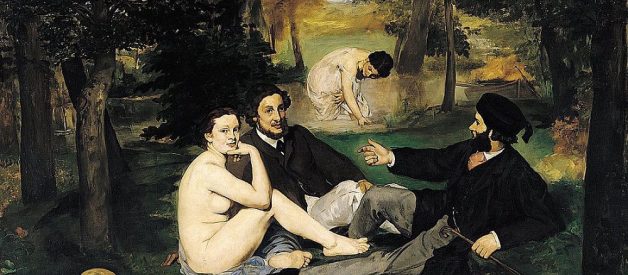 ?The Luncheon on the Grass? By Edouard Manet,1862. Muse du Louvre, Paris
?The Luncheon on the Grass? By Edouard Manet,1862. Muse du Louvre, Paris
I just encountered this painting at an amazing exhibition last week at the muse d?Orsay in Paris so I figured I would share with you why this is such an important and groundbreaking work of Art. The exhibition is called: ?The spectacular second Empire? and will last until January the 15th 2017, so don?t miss it!
?Le Dejeuner Sur l?Herbe? was perceived as such an outrageous painting at the time that it was rejected by the Salon of 1863 and exhibited at the ?Salon Des Refuss?.
First, it presents in the foreground a naked ?cocotte? who is (according to Baudelaire) an elegant prostitute or mistress from the Second Empire very well taken care of by her lovers. Two fully dressed university Parisians men surround her.
 ?Pastoral Concert?by Titian or Giorgione, 1510?1511
?Pastoral Concert?by Titian or Giorgione, 1510?1511
Second, Manet chocked the viewers by making a parody of a work by Titian (or Giorgione), ?Pastoral Concert?, a Renaissance painting greatly admired in France and abroad.
His approach was very modern in its technique (prelude to the Impressionists) as Manet voluntary decided to avoid using the Chiaroscuro technique to render the nude body, reducing the shading of the skin to a minimum. He also abandoned the traditional brown ground to paint directly on the white canvas (Manet thought that classic paintings were too dark) making the nude appear very white, popping against the dark background, lacking three dimensions and appearing almost flat. The Composition was also very modern as the woman bathing in the background is too large and seems to float above the three figures in the foreground.
Manet showed irreverence for the classic rules of esthetic and ironized by mixing past and present. He rebelled against the academy standards by presenting a contemporary picnic with renaissances poses and by showcasing an unapologetic contemporary naked women instead of the academic idealized Nude. Finally, she stares directly at the viewer. Unlike traditional nudes, who are meant to be objects of beauty for contemplation, she seems to engage the viewer, making the painting participative and very modern.


